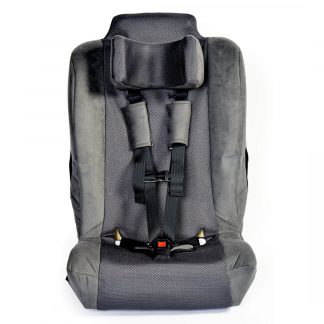The guide below contains crucial factors to consider when choosing car seats for special needs for your children. Parents will find all about:
- Behavioral challenges
- Physical needs
- Physical or supportive child passenger and safety concerns
- Availability of special needs car seats.
So, without further delays, let's dive right into it.
More...
Car Seats for Kids With Special Needs. What You Need to Know?
Special needs car seats are a little different than conventional car seats. They offer more support for your children for better body postures and more comfort.
Please examine the guidelines below if you need the right car seat for your special needs children.
Special needs kids & behavioral challenges
Here are some of the most common behavior types requiring special needs seats and special health care for your kids.
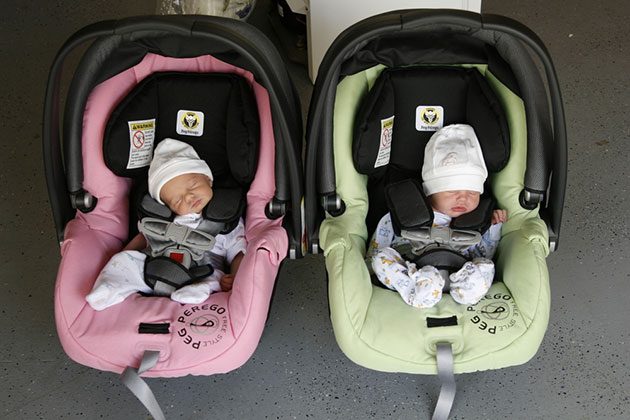
1. A child still rides in a five-point harness and easily unbuckles the chest clip or the crotch buckle. What can parents do?
You have three options:
2. A child is still riding in a booster seat and easily unbuckles the seat belt, putting the shoulder portion behind their back. What should parents do?
If you have small children fit to ride in a harness, here is what you can do:
3. A child is too big for a car seat or booster seat. Additionally, a child is diagnosed with multiple behavioral concerns. They are a danger to themselves, other passengers, parents, or even other motor vehicles on the road. What is the best solution?
It is advisable to keep a child in their regular car seat, if possible. However, the regular car seat won't work when the child shows severe behavior issues (aggressiveness, escaping restraints, distraction, etc.).
But, parents can find multiple after-market and third-party products to keep their child restrained adequately, including a seatbelt buckle shield locking chest clip. These units are not recommended due to safety reasons. However, many parents purchase these items to protect their special needs child on the road.
However, the National Center for the Safe Transportation of Children with Special Health Care Needs has issued a list of approved special needs car seats and safety vests for children and adults with severe behavioral concerns (more about them further in the article).
It would be best to contact your occupational therapist or special needs CPST to help you find the best car seats and ensure the insurance company will cover the costs, as these models might be too expensive.
What are the physical needs of a special needs child?
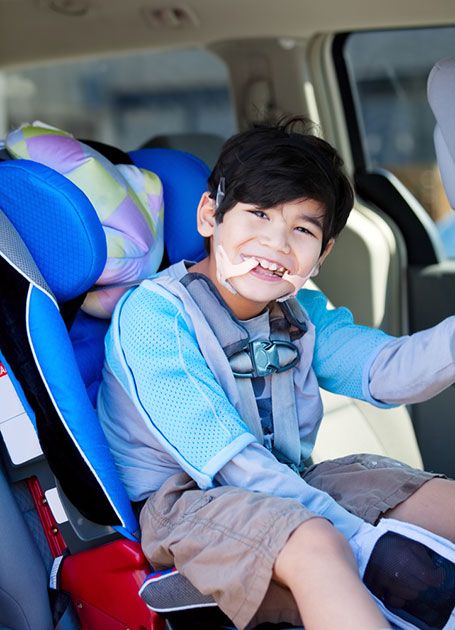
A child with special physical needs requires more support and modifications that a typical car seat cannot offer. The requirements can include:
For similar medical conditions and requirements, please refer to this page. And, if your child shows transportation challenges, do not hesitate to alarm your physician or a verified CPTS for special needs.
Additional child passenger safety concerns
If your OT or CPTS states there's no need for your child to use a special car seat, you don't need to purchase such a child restraint. Your child might regularly use a conventional safety seat. You only need to have your child restrained and ensure they are secure and safe in the seat.
Let's look at the examples below, so you understand better.
1. A child slumps over in the car seat or booster. They may not have enough trunk or tone control to remain seated upwards. What to do?
The issue occurs when children with specific disorders ride in forward-facing harness seats or boosters.
If the child doesn't fit either rear-facing or forward-facing position, please double-check the size and weight range of the seat, and if possible, keep your child rear-facing as long as possible. Many children are more comfortable in rear-facing positions, and the AAP states it's the safest method for younger kids.
In addition, riding cross-legged is standard for toddlers, so the risk of injuries is reduced. The same rule applies for a forward-facing to a booster seat conversion. Keep your little ones in harness as long as possible, as they're not ready for boosters at certain ages. See more information here.
Use a convertible car seat that can be both rear and forward-facing, with a five-point harness.
2. A child can sit upright in a car seat, but they can't hold their head up. What to do?
Book an appointment with your child's doctor or an OT to discuss using a soft fabric collar for more head support during the rides. You can comply with the facts below:
- You may not need to use the foam as head support - your doctor will determine the conditions for use.
- Never use a neck brace, straps, bands, or similar support to hold your kiddo's head back - such instruments can cause internal neck injuries in a car accident.
3. All of the options above are not helpful. What to do?
Firstly, you should again consult your child's doctor or OT to determine your next steps. Then, consider the following factors:
Finally, you should choose the special safety seats if your doctor determines they would help your children during the transportation. Let's see our best options below.
Special needs car seats: Types and purposes
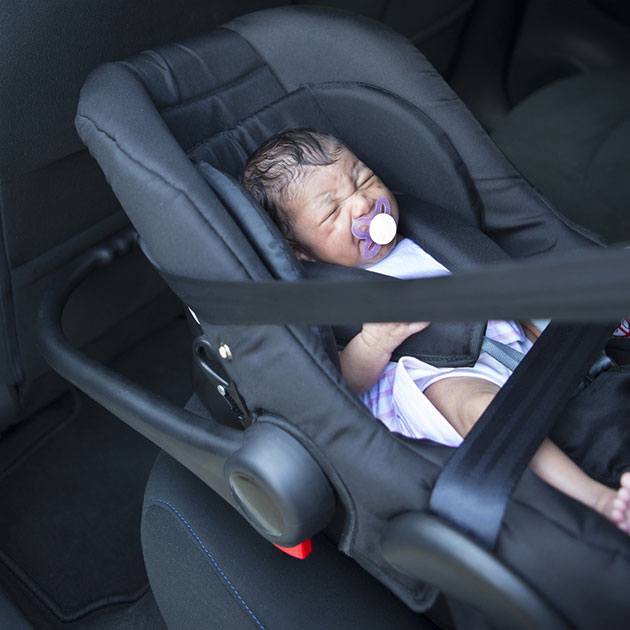
Here is the list of the favorite special needs seats for specific medical requirements. Please note that the list doesn't include all the models, and you can refer to the NTCS brochure to get a better insight into the medical seats.
Below you can find the main types of special child restraints:
The Most Popular Models of Special Needs Car Seat
Here are some of the best special needs car seats on the market. Let's see.
The vehicle vest zips up at the back and offers a zipper to cover it to make it harder to unbuckle it.
You can secure the vest on the floor of your vehicle via a floor mounting system. The system then alarms you to use the vehicle seat belt, keeping your little one secure and stable with the mounted harness.
However, the drawback is that the system is designed specifically to use the vehicle's floor. Thus, you must hire a professional mechanic who understands how to install a child restraint in your cars properly.
In addition, parents must be trained well or read the manual with the CPST to ensure the system works properly. Otherwise, it won't offer protection in a crash.
The special seat works similarly to a regular car seat but has been crash-tested. Thus, it's approved by the NCST for medical use. The kit contains two components:
- Locking chest clip that works by looping behind the kid's neck to prevent them from pushing the chest clip down. It also has a turnkey hole in the central position that locks the clip into place. The kiddos cannot undo it without turning it to the release position.
- The crotch buckle cover makes a shield over the buckle and makes it impossible to release the pin from the upright position the child would use.
But, parents find the restraint inadequate, as kiddos can use special tools to turn and unlock the chest clip.
In addition, if the child unbuckles the seat belt holding the system in its place, the restraint will not have the child properly, and they will get hurt in a crash. The seat is also not suitable for small and compact vehicles.
The seat comes in two options. You can use it as a locking chest clip or vest with Velcro to close in front. Either option offers a helpful solution to prevent unbuckling.
Of course, you can use both, depending on your child's behavior (aggressiveness, distractions, impulsiveness, escaping, etc.).
The negative side is that the whole restraint depends on the seat belt. The belt holds the Churchill over its top, and the seat serves only as a positioner.
So although your little one cannot escape so quickly, the seat belt might not completely protect your child in a car accident.
The seat is similar to the Roosevelt model and works as a typical car seat. But, it's approved for medical use since the restraint comes with add-ons to keep the crotch buckle and chest clip tight and buckled.
You can also attach accessories similar to a child-proof medicine bottle cap for both parts.
Still, the seat is large, and parents have difficulty adjusting the harness.
And, if the child unbuckles the seat belt, the whole restraint will be unstable, and it won't protect your kiddo in an accident.
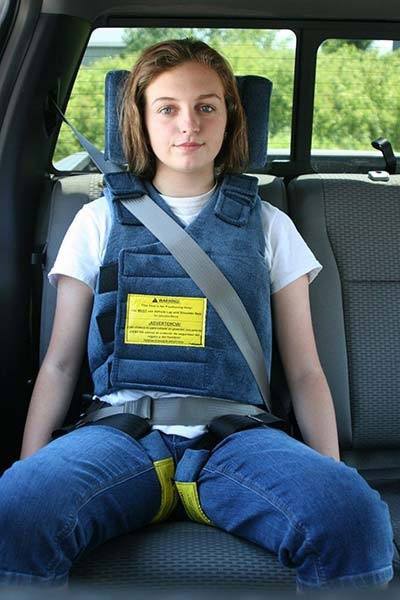
Source: especialneeds.com
The restraint system is similar to the Churchill seat with Velcro accessories.
The child cannot unbuckle the clips or buckles so quickly. They will need more strength to remove the straps and special tools to twist and open the clips.
But, the restraint also uses the seat belt over its top, holding it in the right place. So, if the child succeeds and unbuckles the system, the whole structure will be insecure and cannot protect your kiddo.
Additionally, the unit is more supportive of larger than smaller kids.
The Gen 5 works like the Chamberlain and Churchill as a new-generation vest.
The vest uses a seat belt connected to the harness to keep the child restrained and secure.
You can use it with/without the tether belt and with the lap or shoulder belt only. The device will keep the child safe when properly restrained due to solid buckles.
Unless your child unbuckles and removes the restraint harness, the vest works with the seat belt protecting them in an accident.
FAQs
How do you keep an autistic child in a car seat?
It would help to restrain an autistic child in a vest with straps so that you won't put extra pressure on their aggressive behavior. The child may scream, yell, or act impulsively, so you mustn't worsen their condition.
When do you need a specially designed car seat?
You need a special seat when your kiddo shows aggressive behavior or has a physical disorder. However, your doctor or the OT must approve the use of special seats.
What is the best car seat for an autistic child?
The best car seat for an autistic child is the Ride Safer Travel Vest Gen 5 since the vest won't restrict their motion, and they can move body parts freely. You won't create additional pressure and aggravate their behavior.
What can I use instead of a car seat?
You can use the travel vests, such as the Ride Safer Travel Vest Gen 5 or the EZ-ON Adjustable Zipper Vest for Family Vehicle, as restraints for older children. You can also use car beds for infants who need to lie down.
Do special needs car seats expire?
Yes, special car seats also expire. They can expire after six, eight, or ten years, but you must find the expiration date in the manual.
The Bottom Line
We hope we have solved your dilemmas concerning using special needs car seats.
Always consult your doctors and OTs first to see if your children need medical restraints or not. And if you do, choose among our presented solutions.




